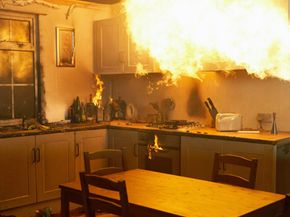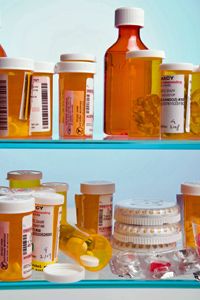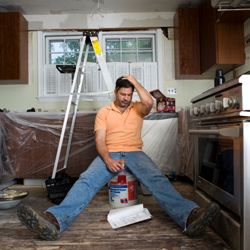Nobody ever expects a home accident to happen, but a slip down the stairs or a kitchen grease fire can happen in the blink of an eye -- even with careful homeowners. In England alone in 2007, nearly 2.7 million people were injured in a home accident [source: RoSPA]. In the United States, injury is the leading cause of death among children and young adults and nearly half of these accidents occur in the home, according to the National Safety Council. That same group states that in 2002, there were more than 33,000 deaths and 8,000,000 disabling injuries that occurred in the home [source: NSC]. That makes one death every 16 minutes and one disabling home injury every four seconds. When it comes to injury and death in home accidents, the leading culprits are falls, toxins and suffocation by ingested object or smoke inhalation. Poisoning is the No. 1 cause of death and claimed the lives of 12,500 in 2002 alone in the United States [source: NSC].
This probably causes you to glance around your house, wondering just what might kill you or injure you. If you don't have a carbon monoxide detector and you have a leaky hot water heater, the "silent killer" could take you out. A small kink in the carpet on your top stair could do it, too. A slippery bathtub, kitchen grease fire or absentminded reach into the garbage disposal could cause you some major problems. So could that dull kitchen knife, the pot of boiling water on the stovetop and the sharp corner of your living room coffee table. Scared yet?
Advertisement
Outdoor accidents involving gutter cleaning and lawn mowers are expected, but the inside of your home has plenty of dangers as well. Anything can happen in any room, but the kitchen and the bathroom are the most likely spots you could suffer an injury or fatality. Those are the two most dangerous rooms in the house.



